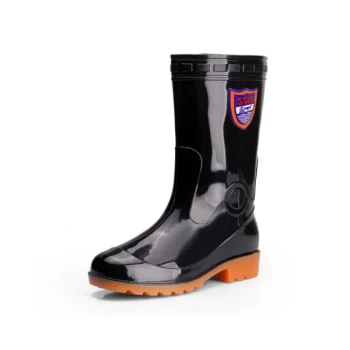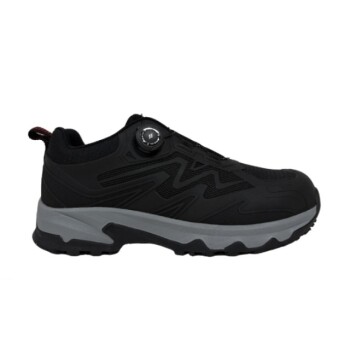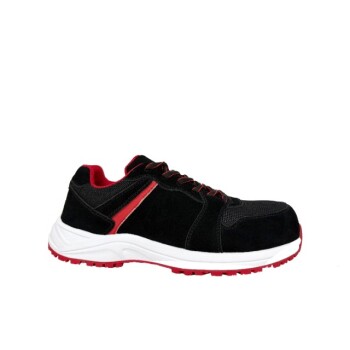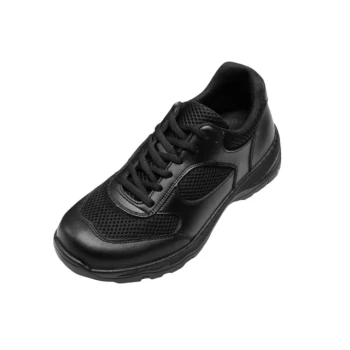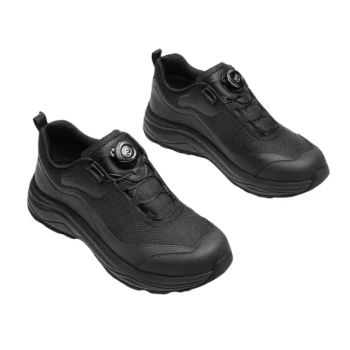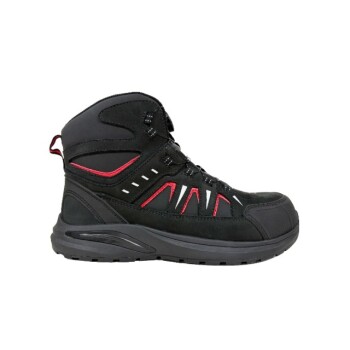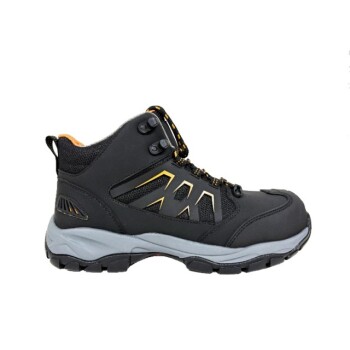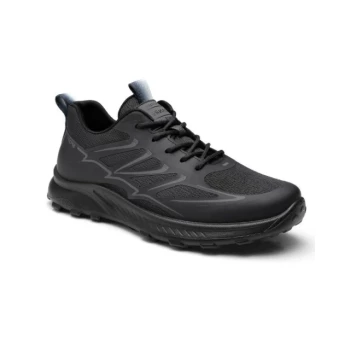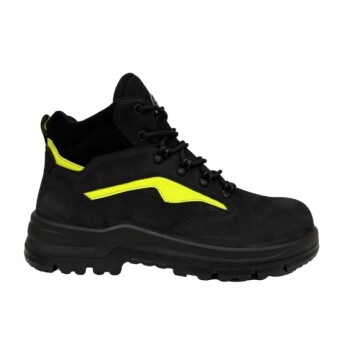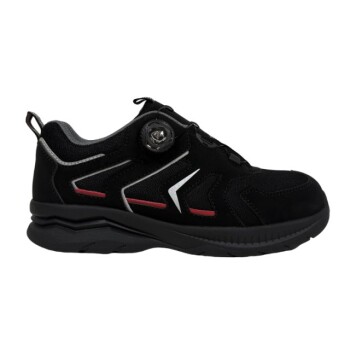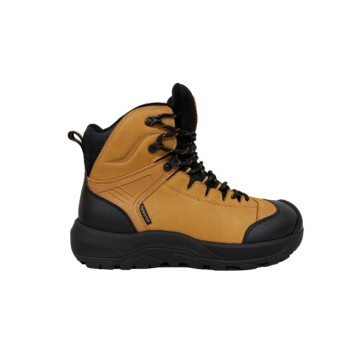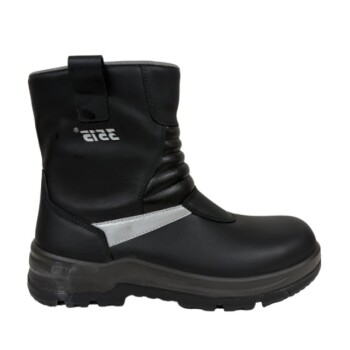To be direct, socks are your primary defense against blisters during a hike. They function as a critical technical layer between your foot and your boot, designed to manage friction, wick away moisture, and provide targeted cushioning. Without the right sock, even the best-fitting boot can cause painful blisters.
The role of a hiking sock is not simply to be a cushion. It is an active moisture and friction management system for your foot. Choosing the right material and fit is more critical than choosing a thick or thin sock.
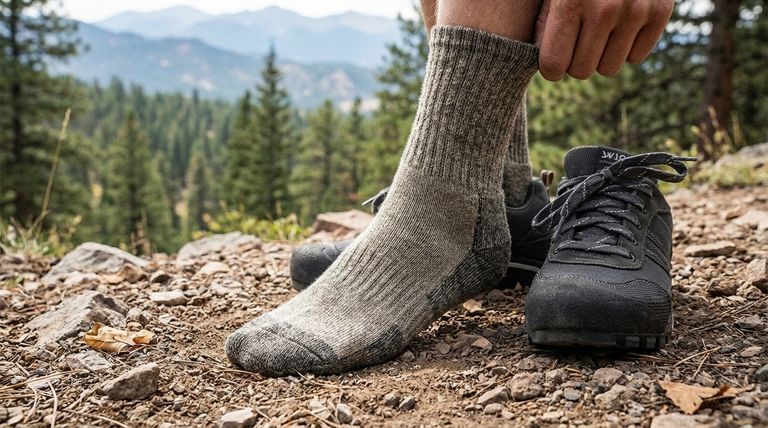
The Three Pillars of Blister Prevention
A well-designed hiking sock prevents blisters by addressing the three primary causes: friction, moisture, and pressure. Understanding how they manage each factor allows you to make an informed choice.
Pillar 1: Managing Friction
A blister is a direct result of friction shearing the layers of your skin apart. Your sock's job is to create a smooth, low-friction surface against your skin.
High-quality hiking socks often use smooth fibers and seamless construction, especially around the toe box. This eliminates stitching that can rub and create hot spots.
Pillar 2: Controlling Moisture
Moisture, primarily from sweat, softens the skin and dramatically increases friction, making your feet highly susceptible to blisters.
The best hiking socks are made from materials like merino wool or synthetic blends that excel at wicking. They pull sweat away from your skin and move it to the outside of the sock where it can evaporate, keeping your foot drier.
Pillar 3: Providing Targeted Cushioning
Constant pressure and impact on areas like the heel and the ball of the foot can lead to blisters. Your sock provides a crucial first layer of shock absorption.
Look for socks with added padding in these high-impact zones. This cushioning helps dissipate pressure and reduces the force transferred to your skin with each step.
Common Pitfalls and Key Considerations
Simply wearing a hiking sock is not enough. The effectiveness of your sock is dependent on the material it's made from and how it fits within your boot.
The Critical Mistake: Wearing Cotton
Cotton is the worst possible material for a hiking sock. It absorbs moisture and holds it against your skin, creating the perfect damp, high-friction environment for blisters to form.
The System: Sock and Boot Must Work Together
A sock's thickness must be matched to your boot. A sock that is too thick can make your boot too tight, creating new pressure points and restricting circulation.
Always try on new boots with the exact socks you plan to hike in. This ensures a proper fit for the entire system.
The Value of Conditioning
Your feet, socks, and shoes need to adapt to one another. Before a long trip, complete several shorter hikes in the exact sock-and-boot combination you plan to use. This hardens the skin and reveals potential hot spots before they become a major issue.
Making the Right Choice for Your Goal
Your sock choice should be tailored to your objective. Use these guidelines to select the right tool for the job.
- If your primary focus is multi-day treks or challenging terrain: Prioritize a seamless merino wool or synthetic sock with proven moisture-wicking capabilities and targeted cushioning.
- If your primary focus is preventing known hot spots: Consider using a thin, low-friction liner sock under your main hiking sock or proactively applying sports tape to problem areas before you start.
- If your primary focus is day hiking in moderate conditions: A well-fitting, mid-weight synthetic or wool-blend sock offers an excellent balance of comfort, wicking, and durability.
Ultimately, viewing your socks as a piece of technical equipment is the first step toward pain-free hiking.
Summary Table:
| Prevention Pillar | How Socks Help | Key Feature to Look For |
|---|---|---|
| Friction Management | Creates a low-friction surface against the skin. | Seamless toe box, smooth fibers. |
| Moisture Control | Wicks sweat away to keep feet dry. | Merino wool or synthetic blend materials. |
| Pressure & Impact | Provides cushioning in high-impact zones. | Targeted padding on the heel and ball of the foot. |
Ready to equip your customers with superior hiking footwear?
As a large-scale manufacturer, 3515 produces a comprehensive range of technical footwear, including high-performance socks designed to work seamlessly with our boots. We provide durable, comfortable solutions for distributors, brand owners, and bulk clients looking to prevent blisters and enhance the hiking experience.
Contact us today to discuss your manufacturing needs and learn how we can help you build a better product line.
Visual Guide
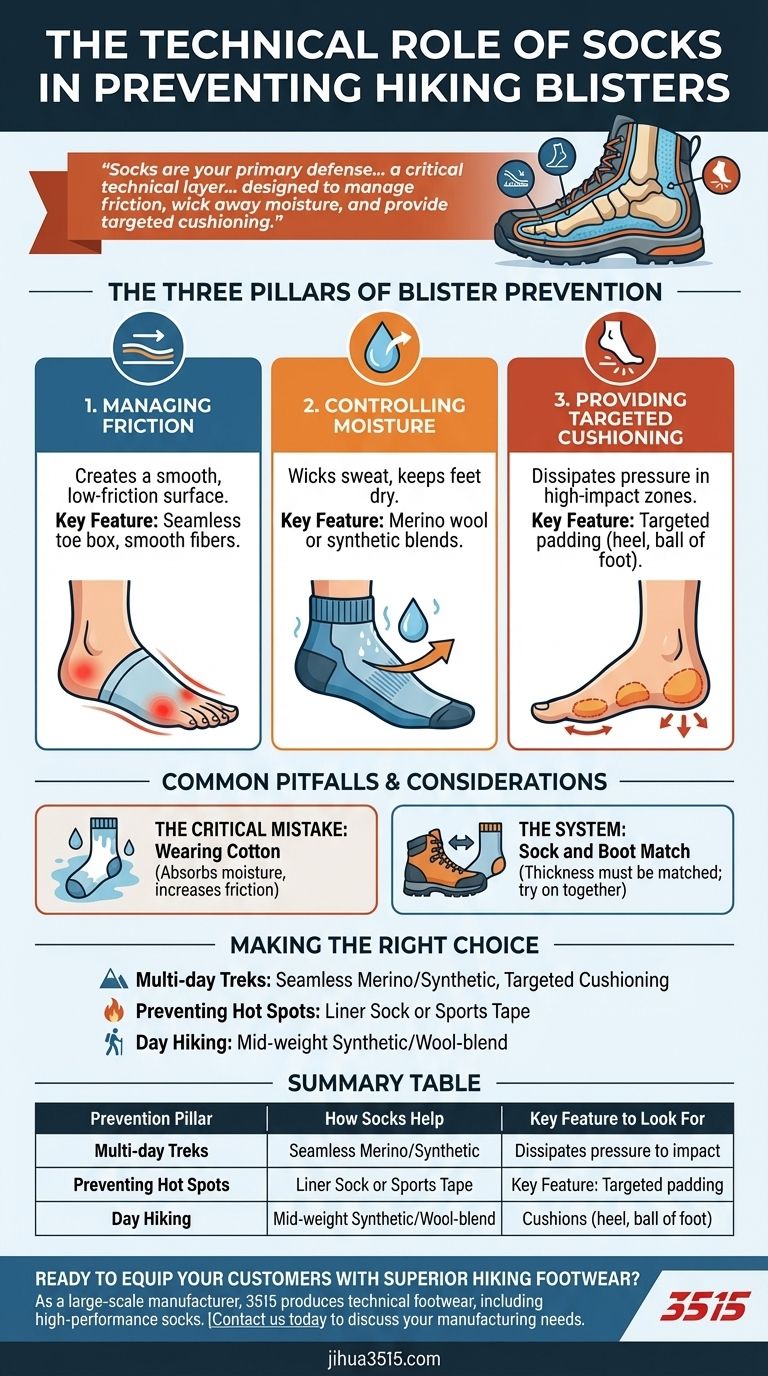
Related Products
- Durable Rubber Sole Outdoor Shoes Wholesale & Custom Manufacturing
- Safety Footwear Wholesale Manufacturer for Custom OEM/ODM Production
- Durable Rubber-Soled Utility Shoes for Wholesale & Custom Brand Manufacturing
- Durable Waterproof Rain Boots | Custom Manufacturer for Wholesale & Brands
- Advanced KPU Athletic Safety Shoe with Steel Toe Cap Anti-Slip Rotary Lacing System
People Also Ask
- What are the main applications of vulcanized rubber? Unlock Durability for Tires, Footwear & More
- What are some alternatives to hunting boots? Hiking, Rubber & Tactical Boots Explained
- What are the disadvantages of vulcanized soles? Lack of Support & Durability Explained
- Why are vulcanized soles popular in urban fashion? Discover the Legacy of Authentic Street Style
- How do hiking shoes or boots protect feet from environmental hazards? A Guide to Trail-Ready Footwear



